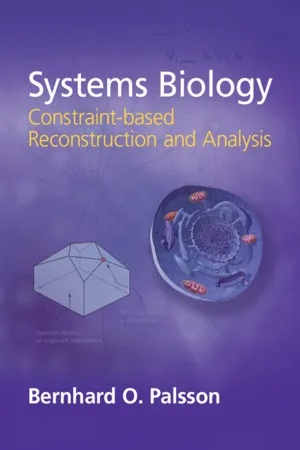
- English
- PDF
- Available on iOS & Android
About this book
Recent technological advances have enabled comprehensive determination of the molecular composition of living cells. The chemical interactions between many of these molecules are known, giving rise to genome-scale reconstructed biochemical reaction networks underlying cellular functions. Mathematical descriptions of the totality of these chemical interactions lead to genome-scale models that allow the computation of physiological functions. Reflecting these recent developments, this textbook explains how such quantitative and computable genotype-phenotype relationships are built using a genome-wide basis of information about the gene portfolio of a target organism. It describes how biological knowledge is assembled to reconstruct biochemical reaction networks, the formulation of computational models of biological functions, and how these models can be used to address key biological questions and enable predictive biology. Developed through extensive classroom use, the book is designed to provide students with a solid conceptual framework and an invaluable set of modeling tools and computational approaches.
Frequently asked questions
- Essential is ideal for learners and professionals who enjoy exploring a wide range of subjects. Access the Essential Library with 800,000+ trusted titles and best-sellers across business, personal growth, and the humanities. Includes unlimited reading time and Standard Read Aloud voice.
- Complete: Perfect for advanced learners and researchers needing full, unrestricted access. Unlock 1.4M+ books across hundreds of subjects, including academic and specialized titles. The Complete Plan also includes advanced features like Premium Read Aloud and Research Assistant.
Please note we cannot support devices running on iOS 13 and Android 7 or earlier. Learn more about using the app.
Information
Table of contents
- Cover
- Half-title
- Title page
- Copyright information
- Dedication
- Table of contents
- Preface
- List of abbreviations
- 1 Introduction
- Part I Network Reconstruction
- Part II Mathematical Properties of Reconstructed Networks
- Part III Determining the Phenotypic Potential of Reconstructed Networks
- Part IV Basic and Applied Uses
- Part V Conceptual Foundations
- References
- Index